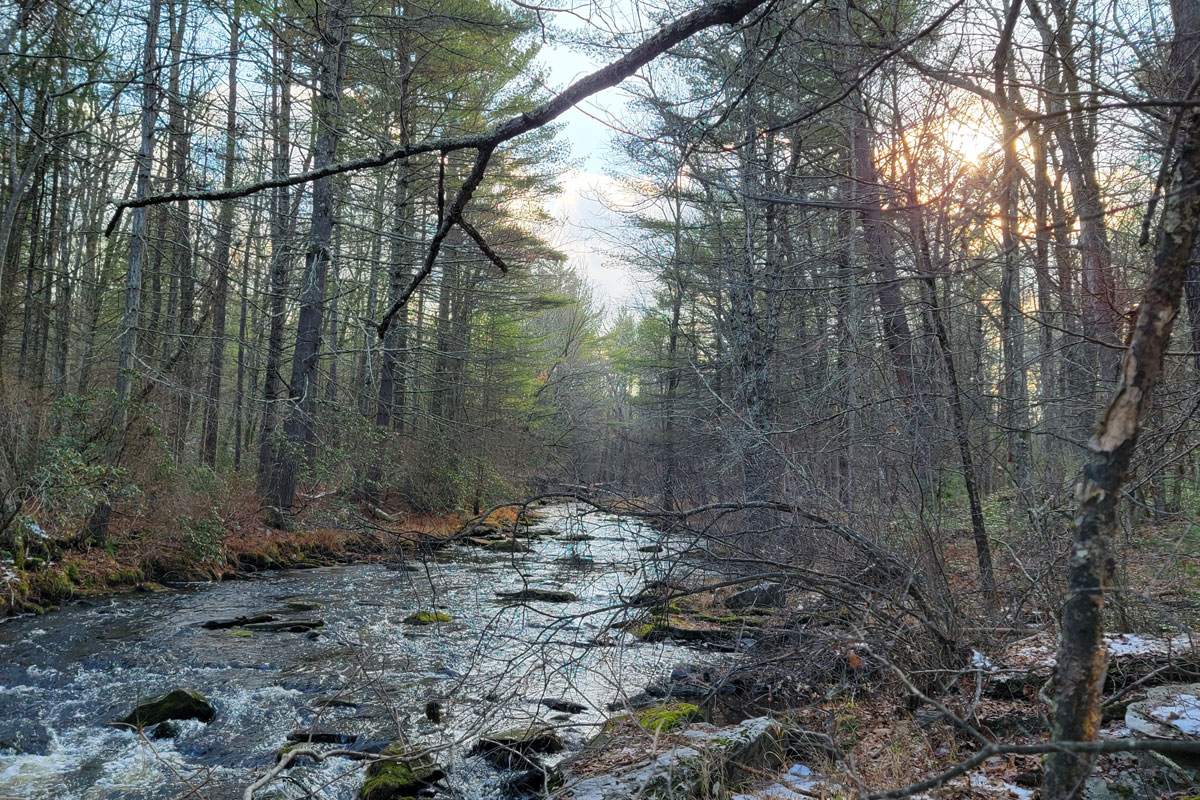News

Into the Woods
By Marianna Quartararo, Resource Conservationist
The State of Pennsylvania is named for its forests–Pennsylvania translates from Latin to “Penns Woods.”
More than 60% of the Commonwealth is blanketed by forests (16.6 million acres)! The forests not only provide opportunities for hiking, camping, and hunting, they filter and protect thousands of miles of streams and drinking water, sequester carbon, clean the air, and help regulate climate. Forests also provide hardwood timber which supports a 20-billion-dollar wood products industry that employs 60,000 people in PA.
Most of Pennsylvania’s forests are one of 2 types- 54% are mixed oak forests (northern red oak, chestnut oak, shagbark hickory, red maple, and tulip poplar) and 32% are Northern hardwood at the higher elevations (sugar maple, black cherry, aspen, birch, hemlock, and ash species). These same forests provide critical habitat for a multitude of mammals, birds, aquatic species, and insects.
According to research done by the Stroud Water Research Center in Avondale, PA, streams that run through forests are healthier and support a wider variety of fish, macroinvertebrates, and amphibians. Riparian forest buffers, which are the forested areas along streams, filter sediment from streams during storm events, remove run-off nutrients from residential properties and agricultural fields, stabilize stream banks, shade and cool streams which is critical for many fish and macroinvertebrate species, and reduce stream velocity and downstream flooding.
Forests provide critical habitat for many insect species which in turn pollinate our plants, providing food for songbirds and ourselves. Oak tree species alone are one of the greatest supporters of insect diversity and abundance. Oaks support more caterpillar (moth and butterfly) species than any other native tree species. They also provide acorns which are eaten by many different types of animals . On the forest floor, many insects, and some amphibians, also overwinter in leaf litter either as adults (e.g., mourning cloak butterfly and wood frog) or as eggs (walking stick insect) to emerge from a long winters nap in the spring.
Forests tie everything together, they provide livelihoods for people and habitat for wildlife and insects. Without forests, entire ecosystems begin to fall apart. We need to better understand and appreciate all forests do for us.
Take a walk into the woods to enjoy our forests in all its majesty.
